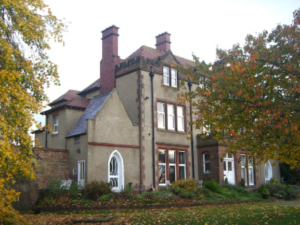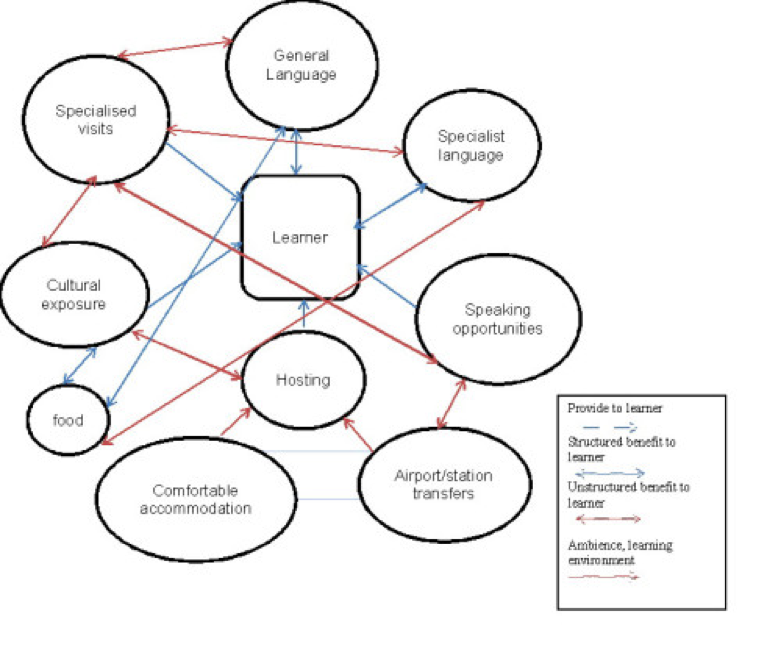- You are here:
- Home »
- Blog »
- Prepare for your IELTS Exam »
- What Does Design Have to Do with EFL?
What Does Design Have to Do with EFL?
 I have been thinking back to an IATEFL conference I attended a few years ago in Glasgow. One of the sessions that struck a real chord with me was the Plenary given by Diana Laurillard. In this plenary, she explored ideas of teacher communities and also course design, but a course design that was adaptable to many situations and which could be shared across these communities to create a bank of both flexible lesson plans and examples of good practice that had been tried and tested and found to be very effective.
I have been thinking back to an IATEFL conference I attended a few years ago in Glasgow. One of the sessions that struck a real chord with me was the Plenary given by Diana Laurillard. In this plenary, she explored ideas of teacher communities and also course design, but a course design that was adaptable to many situations and which could be shared across these communities to create a bank of both flexible lesson plans and examples of good practice that had been tried and tested and found to be very effective.
I am sure that my explanation of this is highly simplistic and that, in reality, it is much more complex than I am sharing here, but it was the idea of programme models that struck me most about her talk. It seems that we all, to an extent, go around inventing the wheel over and over and that by creating, testing, measuring and sharing we could perhaps cut down on our work-load and have a more predictable outcome to our programmes and courses. It’s worth considering I feel.
I worked with a young product design student exploring elements and ideas of design a few years ago, and since then it has become apparent to me that everything is really about design and that by looking at anything we do from a design perspective makes it look very different, and also allows us to be far more creative in our ideas and approaches. I am very excited by this idea as I have been exploring course designs and models for my own programmes both online and face-to-face for the past two years and through a great deal of trial and error I do believe that I have finally created a model for my programmes which is highly adaptable and flexible enough to fit any student and any area of study that they need, be it ESP, general English, exam work or professional development.
“Design is that area of human experience, skill and knowledge which is concerned with man’s ability to mould his environment to suit his material and spiritual needs.” Archer
Design is essentially about solving problems and improving things. I think this idea is a very good fit for EFL. We, as teachers, need our skills to evolve and grow and this, in turn, will help us to give our learners a better outcome and solve the problems that we face day-to-day with students in the classroom. Rather than re-inventing the wheel each time, we can work with frameworks and models that allow us to create courses and programmes which will suit our learners. Then, by sharing these frameworks and the way in which we have adapted them, we can build a repository of working models that will both help and be further enhanced by other teachers.
One of the programme models I have been working on is for the short- immersion courses I run here in the UK. These programmes consist of several elements which I feel must be present for the programme to be truly beneficial to participants but also to meet and hopefully exceed their expectations.
I want to share the model here – it is simple but can be adapted to any learner or group of learners who take the course (including EFL teachers).
The model shows all the elements that I need to include in an immersion programme. As you can see this goes beyond the actual lessons. Key to the success of these programmes, I feel, is making sure that all elements interconnect in some way to add value to the language development and also to the experience for the client.
This model translates into a timetable for the programme where everything is tied in. It goes, however, beyond a mere timetable into all areas of the stay which creates the immersion and feeds back into the technical language taught in the formal sessions.
Everything is crafted to produce a programme which provides pure language practice, specialised language practice, experience of local culture, exposure to native speakers and venues that are relevant to the client’s work (or interests) and an enjoyable and comfortable stay in what is a very lovely part of the UK. I have tried to show in the diagram where these elements are two-way (as in the formal lessons) and where they are provided for the client and expected as part of the programme (e.g. with accommodation). Another level on the model shows where things are deliberately structured (ie: lessons or set work, prepared visits, meals etc..) and where they are more random (such as what happens on actual visits or when meeting people locally).
 The programme begins at the airport or station and from then on every aspect of the day is to a greater or lesser extent a learning experience. Most of the learners require a mix of general English and some technical ESP language. They are also learning within British culture which translates into the food I prepare, some of the activities we engage in (for example a visit to our village pub) and the general way in which we live day-to-day. Visits are arranged to suit their ESP needs where possible. This not only allows them to use specialist language but also to use this language with English-speaking members of their own profession which, I find, is one of the most valuable aspects of the programme.
The programme begins at the airport or station and from then on every aspect of the day is to a greater or lesser extent a learning experience. Most of the learners require a mix of general English and some technical ESP language. They are also learning within British culture which translates into the food I prepare, some of the activities we engage in (for example a visit to our village pub) and the general way in which we live day-to-day. Visits are arranged to suit their ESP needs where possible. This not only allows them to use specialist language but also to use this language with English-speaking members of their own profession which, I find, is one of the most valuable aspects of the programme.
The final piece of the jigsaw is the setting or ambience in which the learning takes place and this must also be considered as it needs to fit with all the other elements to ensure a successful outcome.
I am happy to share this model as it has been tested and works well. Please use and adapt it. In the final analysis it is not a model for an English language course particularly but for an immersion programme and can be used for any subject delivered in that format.
To find out more about immersion programmes at Fleetham Lodge in Yorkshire follow the link. I have spent decades preparing programmes, courses, one-on-one coaching techniques, and webinars to help students succeed. Visit our site and find out more!

